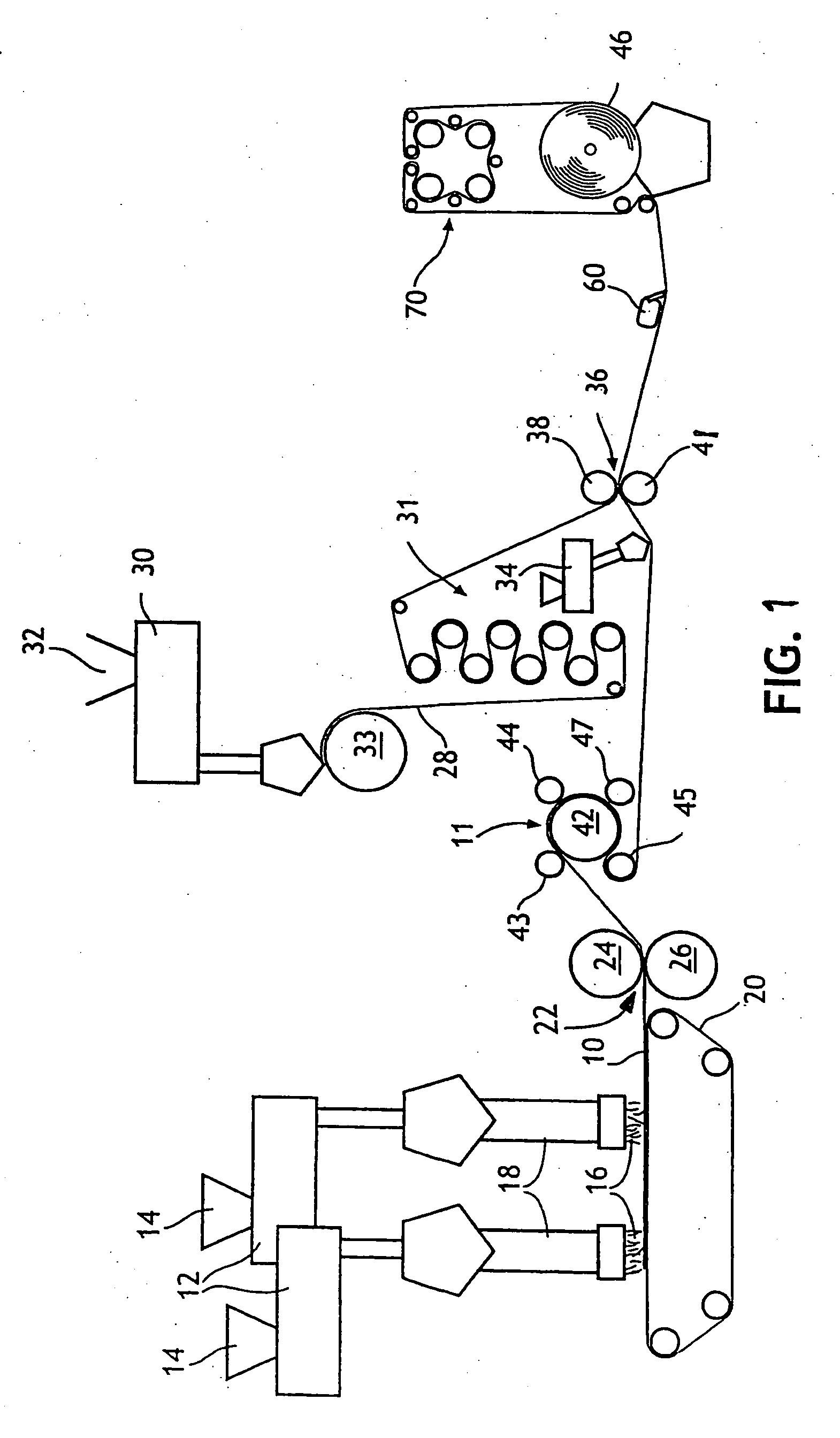Extensible and stretch laminates with comparably low cross-machine direction tension and methods of making same
a technology of machine direction tension and laminate, which is applied in the direction of bandages, weaving, other domestic articles, etc., can solve the problems of reducing the ability to provide reliable fastening, reducing the ability to provide good fit and gasketing, and reducing the cross-machine direction tension value. , to achieve the effect of reducing cross-machine direction tension values and low cross-machine direction tensions
- Summary
- Abstract
- Description
- Claims
- Application Information
AI Technical Summary
Benefits of technology
Problems solved by technology
Method used
Image
Examples
examples
[0121] The examples were carried out with equipment under the following conditions unless stated otherwise in the examples:
Conditions
[0122] Several fibrous facing layers were utilized in this evaluation, including polyolefinic fibers from BBA Fiberweb of Simpsonville, S.C., under the designation SOFSPAN 120 and fibers incorporating developmental propylene-ethylene copolymers obtained from The Dow Chemical Company.
[0123] A fibrous nonwoven web was generally unwounded with a 9.5 psi unwind tension and then introduced into a nip of intermeshing grooved steel rolls (of a satellite grooved roll arrangement) at a velocity of 99 meters / min (325 ft / min). Each roll had a width (end to end) of about 66 cm (26″) with the diameter of the satellite groove rolls about 27 cm (10.6″) and the diameter of the main center groove roll about 45 cm (17.85″). Each groove was formed with a depth of 0.39 cm (0.154″) and with a peak to peak distance of 0.31 cm (0.125 ″) resulting in a maximum draw ratio ...
specific examples
[0126] Code 1 A 50 / 50 blend of Resin P-E3 and PP 3155 (polypropylene) of Exxon Mobil as the facing layer with styrenic block copolymer film without skin layer. Resin P-E 3 is a developmental propylene-ethylene copolymer obtained from The Dow Chemical Company containing 12 percent by weight units derived from ethylene and having a melt flow rate of 25 g / 10 min. This copolymer exhibits a heat of fusion of 17.4 Joules / gram, which corresponds to a crystallinity of 11 wt %, and a MWD of 3. This propylene-ethylene copolymer exhibits triad isotacticity (mm) of 0.96.
[0127] A film / nonwoven laminate was produced. The film layer filler concentrate was comprised of 75% calcium carbonate which was dispersed into a polymeric carrier resin. The calcium carbonate, available from Omya, Inc. North America of Proctor, Vt., and designated as 2SST, has an average particle size of 2 microns with a top cut of 8-10 microns and a coating of approximately 1% stearic acid. The polymeric carrier resin which c...
PUM
| Property | Measurement | Unit |
|---|---|---|
| Fraction | aaaaa | aaaaa |
| Fraction | aaaaa | aaaaa |
| Fraction | aaaaa | aaaaa |
Abstract
Description
Claims
Application Information
 Login to View More
Login to View More - R&D
- Intellectual Property
- Life Sciences
- Materials
- Tech Scout
- Unparalleled Data Quality
- Higher Quality Content
- 60% Fewer Hallucinations
Browse by: Latest US Patents, China's latest patents, Technical Efficacy Thesaurus, Application Domain, Technology Topic, Popular Technical Reports.
© 2025 PatSnap. All rights reserved.Legal|Privacy policy|Modern Slavery Act Transparency Statement|Sitemap|About US| Contact US: help@patsnap.com



